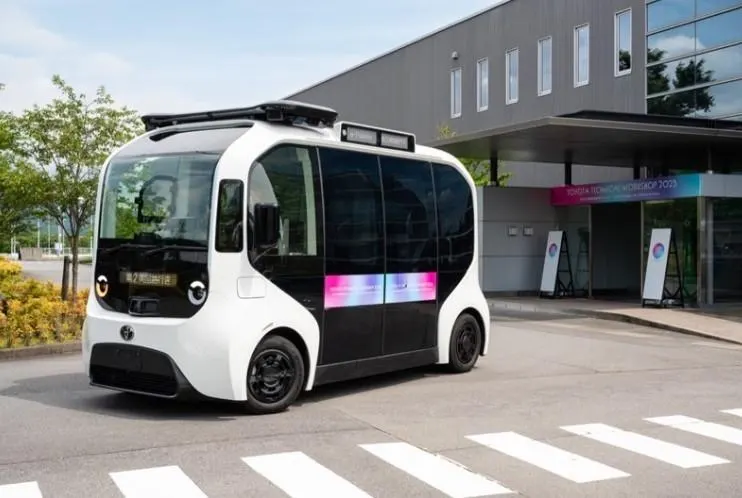By Bryan Robinson,Contributor,Ph.D
Copyright forbes

AI workslop is costing millions, destroying productivity and may be messing with your career.
AI has caused a mixture of excitement and fear as it becomes a standard part of our lives, raising the question, “Is AI a shield or a sword?” Some say it’s a risk to civilization as we know it. Others insist it’s transforming the way we work, live and interact with one another. The part that is not debatable is that not only is AI not going away, it has become an integral part of the workday. So it’s important to develop a reasonable comfort around its use. But can AI live up to its promise? Recent reports claim that “AI workslop” is interfering with productivity, costing businesses millions of dollars.
What Is ‘AI Workslop’?
A blood vessel burst in my left eye, and I ended up at Urgent Care. The intake staff relayed my symptoms into AI. Later, when the doctor examined me, she said, “So you’re having eye pain, itching and soreness.” I replied, “No, I don’t have any pain, itching or soreness.” Frustrated, the doctor blurted, “Workslop.” She was referring to AI (or the user) misinterpreting those symptoms as “yes” instead of “no.”
It was ironic that “AI workslop” actually happened while I was writing this story. As technology makes its way into more aspects of everyday work–from office documents to newsrooms to doctor’s offices–some workers complain that AI produces sloppy content or so-called “workslop.” A new story in the Harvard Business Review declares that, “AI-Generated ‘Workslop’ is Destroying Productivity,” explaining how workslop happens:
“As AI tools become more accessible, workers are increasingly able to quickly produce polished output: well-formatted slides, long, structured reports, seemingly articulate summaries of academic papers by non-experts and usable code. But while some employees are using this ability to polish good work, others use it to create content that is actually unhelpful, incomplete or missing crucial context about the project at hand. The insidious effect of workslop is that it shifts the burden of the work downstream, requiring the receiver to interpret, correct or redo the work. In other words, it transfers the effort from creator to receiver.”
The piece cites an MIT Media Lab report stating that, despite all the activity and enthusiasm, 95% of organizations find no measurable return on their investment in these technologies. Imagine a team member sends you a document that looks polished and professional at first glance. But upon closer inspection, you notice it was hastily thrown together, lacks substance and makes no sense. And it takes you hours of extra time to rework the document.
MORE FOR YOU
That’s “AI workslop,” defined by the authors as AI generated work content that masquerades as good work, but lacks the substance to meaningfully advance a given task. Of course, all AI output isn’t slop. AI can actually help produce faster, clearer and more valuable work when applied the right way. By late 2024, 40% of companies were already using it in daily operations, with 40% giving it a shot. In other words, 80% of businesses are either already on board or preparing to embrace AI.
The real issue isn’t the tool itself but how you use it. AI can deliver precise results, but it simply needs to be applied correctly, according to Ryan Zhang, workplace productivity expert and founder of Notta. “The problem isn’t with the technology, but how it’s applied,” he says. “When businesses use AI for specific tasks with clear goals, it can improve efficiency and let teams focus on higher-value work. The key is knowing how to integrate AI into workflows where it adds real value.”
Hommer Zhao, founder of WellPCB agrees. “In many industries, including manufacturing, adopting new technologies like AI can be a double-edged sword,” Zhao explains.”AI offers tremendous potential to streamline processes and improve efficiency, but it’s only effective when applied thoughtfully.”
5 Tips To Use AI And Avoid Getting ‘AI Workslop’
Zhang offers five tips to utilize AI without getting “AI workslop.”
1. Start small. Begin with specific, low-risk tasks to test how AI fits within your business processes.
2. Set measurable goals. Identify what success looks like with AI, whether that’s improved efficiency, reduced errors or increased output quality.
3. Integrate AI gradually. Don’t overwhelm your team by applying AI to everything at once. Introduce it into areas where it can have the most immediate impact.
4. Monitor and refine. Regularly check the AI’s performance and adjust how it’s being used to ensure it aligns with your business goals.
5. Keep a human touch. Remember, AI may provide insights or automate tasks, but the creative, strategic and empathetic aspects of work should remain human-driven
A Final Takeaway On ‘AI Workslop’: Leaders Listen Up
Businesses are overwhelmingly relying on AI tools like Anthropic to automate work. Experts are concerned that AI’s productivity gains might actually be turning into losses as “AI workslop” begins to take over the workplace.
Zhao believes the key is for leaders to ensure that AI is integrated in ways that complement human skill and oversight. “When used the right way, AI can cut down on waste, reduce errors and provide faster insights even without the ‘slop,’” he contends. “Whether in electronics or any other field, getting AI right requires a clear understanding of its capabilities and limitations.”
According to Jamie Aitken, vice president of HR transformation at Betterworks, it’s up to leaders to set clear expectations for how AI should be used if they want to mitigate “AI workslop” in their organizations.
Aitken acknowledges that workslop isn’t new. It has existed since there have been workplaces. “In HR, it’s the same problem we’ve lived with in broken workplace systems for decades. Annual reviews that leave stale feedback. Goals that aren’t aligned until year-end. One-off check-ins that create more questions than answers. In all cases, the burden rolls downhill. AI just speeds up the mess.”
Aitken insists that leaders who model thoughtful AI use set the tone for everyone else. She adds that when done right, it becomes “a multiplier for great work: helping managers coach better, keeping employees aligned and giving teams more time for meaningful contributions.” When done wrong, she concludes, it accelerates mediocrity. “AI workslop” anyone?
Editorial StandardsReprints & Permissions



